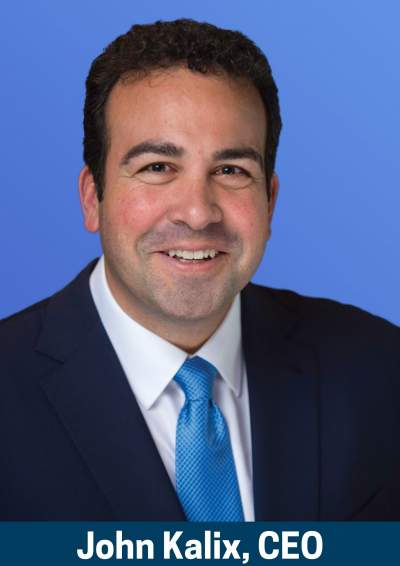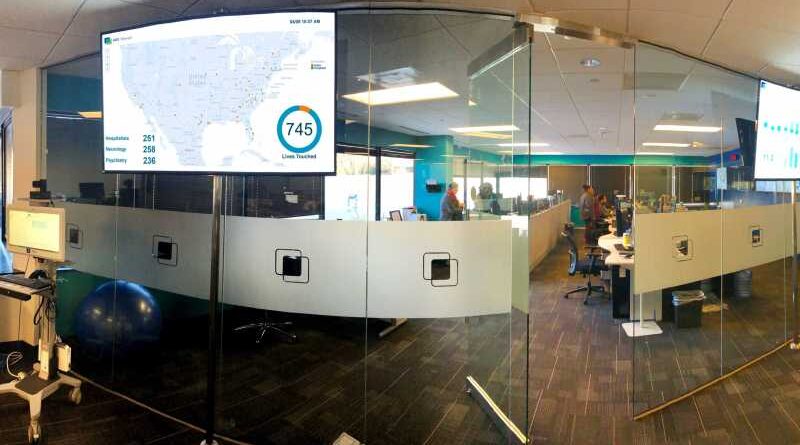SOC Telemed- Leading the World of Telemedicine

The past several months shed new light on telemedicine and its possibilities. Hospital systems are now realizing that it’s time to lean into technology innovations as rigidity can endanger the very lives they seek to protect. Telemedicine brings a wide range of benefits for consumers and hospitals, including faster diagnoses, increases in care efficiency, and reducing patient stress.
“Telemedicine is emerging as a solution to create additional clinical capacity, improve clinical quality, and drive operational efficiencies—creating a path to improved profitability for struggling healthcare providers,” states John Kalix, CEO of SOC Telemed. For more than 16 years, SOC Telemed has been driven by one goal—to deliver high-quality specialty clinical care at scale through technology. The company is one of the largest national providers of acute care telemedicine technology and solutions to hospitals, health systems, post-acute providers, physician networks, and value-based care organizations.
From Novelty to Necessity
While the pandemic supercharged interest in telemedicine, its value is immeasurable even in a post-COVID world. Data published by the Association of American Medical Colleges (AAMC) reveals that the U.S. will see a shortage of over 60,000 physicians by 2025. This is mainly due to population growth, aging, and the fact that more than two in five active physicians will be at retirement age within the next decade. Layer on a multitude of other industry-wide issues such as physician burnout, operational bottlenecks, technology gridlock, the ever-changing regulatory and compliance landscape, and the situation becomes increasingly complicated. Let’s not forget that rural communities will have it worse—with almost a quarter of Americans living in rural areas and only 9% of physicians practicing in those areas; there is a massive lack of access to quality care. These factors are creating profound financial pressure for hospitals and directly impacting their bottom line. There is one simple solution to it all—telemedicine.
Today, SOC Telemed is a world leader in the evolving realm of telemedicine. The company currently empowers more than 850 facilities in 47 states with the technology and expertise to manage complex workflows and to provide timely, high quality, and in many cases, life-saving care. The fact that a group of physicians founded SOC Telemed makes it even more credible—behind its solutions are people who closely understand the challenges and scope in telemedicine. Expanding on that, Kalix says, “SOC Telemed’s mission has always been to provide time-sensitive access to care when patients are at their most vulnerable.”
Ushering the Telemedicine Revolution
SOC Telemed has invested heavily in creating a robust, scalable telemedicine infrastructure to connect patients with specialists, when and where care is needed. Kalix confirms that until recently, only a small subsegment of healthcare adopted telemedicine. Some of the main obstacles were reimbursement policies, regulatory concerns, lack of endpoints throughout the facility, and technical issues, including broadband quality. There was also a general lack of knowledge and familiarity when it came to acute care telemedicine against direct-to-consumer telemedicine. “Fortunately, the easing of Medicare reimbursement requirements and regulations is breaking the logjam. The increasing rollout of 5G networks is one advancement that ensures improved communication reliability and speed of acute telemedicine adoption,” says Kalix.

Against this backdrop, Telemed IQ, a telemedicine technology platform, is raising the bar in the field of virtual health. The platform is easy to implement and was purpose-built to deploy a network of 170 specialty physicians virtually. “Hospitals and clinics can partner with us to access a large pool of credentialed physician specialists. We are Joint Commission accredited and can offer credentialing by proxy to speed up the process,” explains Kalix. The platform is also available to hospitals and healthcare organizations nationwide to deploy their own clinical networks.
Telemed IQ brings necessary flexibility to support every hospital’s unique needs; it can be used for provider-to-patient and provider-to-provider interactions across any clinical specialty, any clinician network, any care location, and on any web-enabled device. It integrates seamlessly with clients’ existing EMR systems, delivering consult documentation directly into the patient’s medical record. With Telemed IQ, providers can deploy, optimize, and scale a telemedicine program rapidly and cost-effectively across the care continuum.
At the Leading Edge
“Through Telemed IQ, we currently offer three essential service lines to hospitals: teleNeurology, telePsychiatry, and teleICU,” informs Kalix. The emergency teleNeurology service covers all neurological emergencies in hospitals, including acute stroke. “While stroke may be the most familiar reason for emergency teleNeurology, our neurologists are board-certified and deeply experienced in handling all varieties of neurologic issues, both urgent and non-urgent,” he adds.
Similarly, the emergency telePsychiatry service provides specialists for all psychiatric diagnoses, anywhere in the hospital. According to research by American Addiction Centers, today 8.5 million American adults suffer from both mental health and a substance use disorders. It is common for these patients to arrive at the emergency department in need of care. But EDs are built for medical emergencies, not psychiatric ones. “Mental health patients often wait for hours or even days to see a psychiatrist who can help determine whether they need to be admitted or discharged for outpatient care. Our telePsychiatry offering helps patients receive the mental health care they need, fast, while improving throughput in the facility,” points out Kalix. SOC Telemed’s telePsychiatry consultations can include an imminent threat of self-harm, violent or threatening behavior, anxiety/panic disorders/PTSD, bipolar disorder/depression, or substance abuse. Health systems that have already deployed the telePsychiatry solution are ahead of the curve in serving this population.
Lastly, the teleIntensivists service provides on-demand critical care expertise and support at the point of care anywhere in the health system. SOC Telemed’s team is engaged clinically within minutes to evaluate the patient’s status and needs, just as any ICU would manage their patient population. The teleICU services and solutions provide complete 24/7 coverage by a board-certified intensivist and enhanced clinical decision support.
Measurable Results
When Guthrie’s Robert Packer Hospital (RPH) implemented SOC’s teleNeurology solution, the program was an immediate success. The client significantly improved its critical measures endorsed by the American Heart Association/American Stroke Association. This involved the percentages of eligible patients receiving thrombolytics and those receiving it within 60 minutes of arrival to the emergency room. With SOC Telemed, Guthrie achieved a decrease in transfers and a dramatic increase in thrombolytic administrations while RPH gained accreditation as a Primary Stroke Center from The Joint Commission.
To stay on top of innovation and improved clinical outcomes, SOC Telemed believes in forging partnerships with healthcare organizations to bring clinicians and patients together. Today, the company’s clients include 19 of the nation’s 25 largest health systems, which speaks volumes about their services. Recently, the company announced its merger with Healthcare Merger Corp, a special purpose acquisition company. This merger strengthens SOC Telemed’s market position and will allow the company to penetrate further into the broad and fast-growing world of acute telemedicine. Kalix adds in conclusion, “We are here to transform the future of not just telemedicine, but healthcare, for generations to come.”



